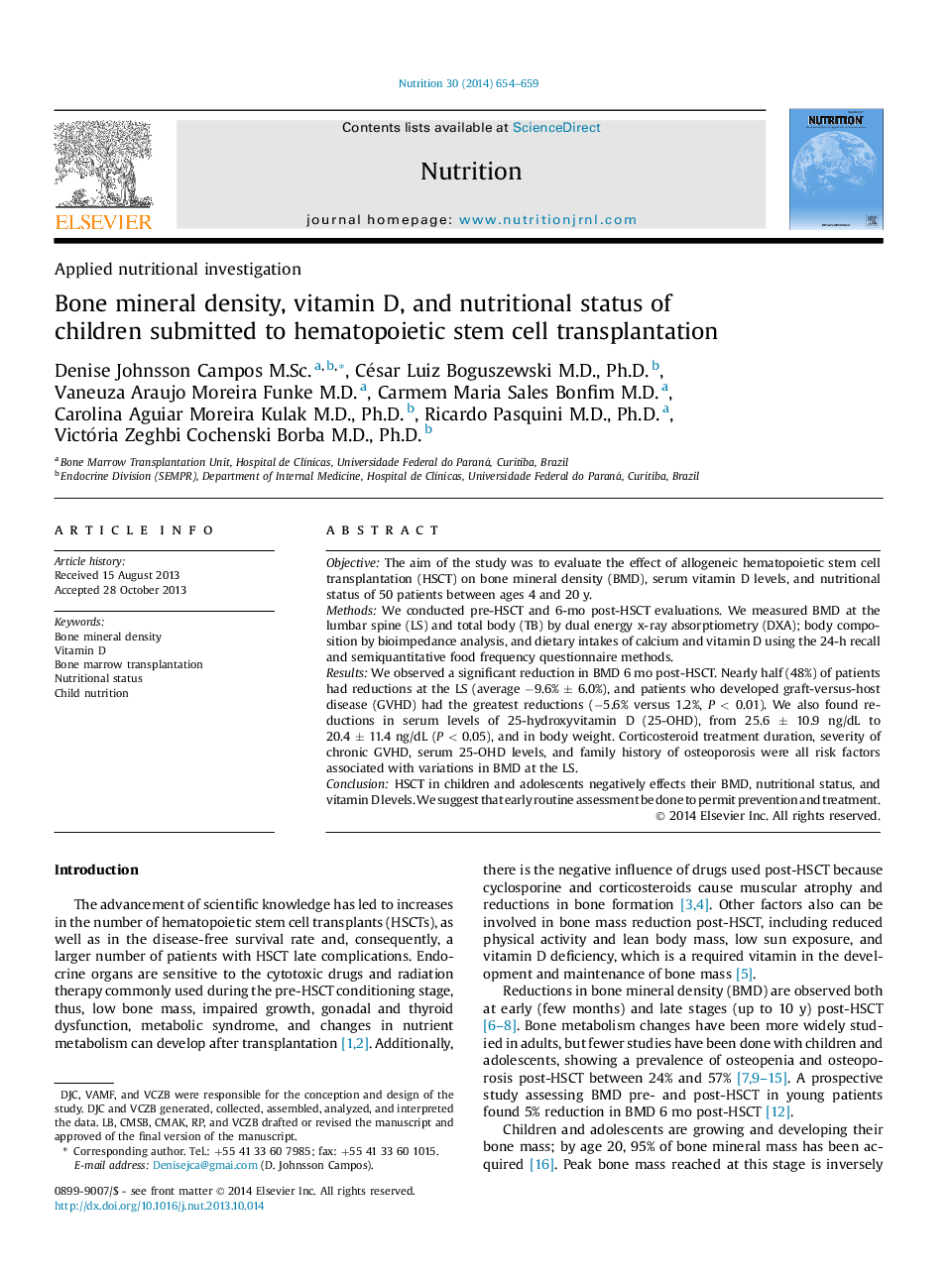| Article ID | Journal | Published Year | Pages | File Type |
|---|---|---|---|---|
| 6089769 | Nutrition | 2014 | 6 Pages |
ObjectiveThe aim of the study was to evaluate the effect of allogeneic hematopoietic stem cell transplantation (HSCT) on bone mineral density (BMD), serum vitamin D levels, and nutritional status of 50 patients between ages 4 and 20 y.MethodsWe conducted pre-HSCT and 6-mo post-HSCT evaluations. We measured BMD at the lumbar spine (LS) and total body (TB) by dual energy x-ray absorptiometry (DXA); body composition by bioimpedance analysis, and dietary intakes of calcium and vitamin D using the 24-h recall and semiquantitative food frequency questionnaire methods.ResultsWe observed a significant reduction in BMD 6 mo post-HSCT. Nearly half (48%) of patients had reductions at the LS (average â9.6% ± 6.0%), and patients who developed graft-versus-host disease (GVHD) had the greatest reductions (â5.6% versus 1.2%, P < 0.01). We also found reductions in serum levels of 25-hydroxyvitamin D (25-OHD), from 25.6 ± 10.9 ng/dL to 20.4 ± 11.4 ng/dL (P < 0.05), and in body weight. Corticosteroid treatment duration, severity of chronic GVHD, serum 25-OHD levels, and family history of osteoporosis were all risk factors associated with variations in BMD at the LS.ConclusionHSCT in children and adolescents negatively effects their BMD, nutritional status, and vitamin D levels. We suggest that early routine assessment be done to permit prevention and treatment.
